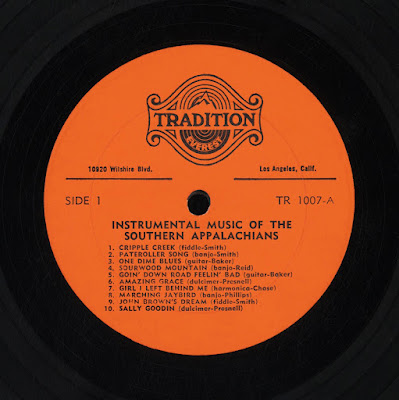INDIA – INDE
Pannalal Ghosh – His Master’s Voice - EALP 1354, released in 1970 (LP)
Pannalal Ghosh (1911-1960), born into a musical family in Barisal, in present day Bangladesh, was a major 20th-century Hindustani musician and pioneer, who transformed the bamboo bansuri flute—an instrument played mostly in folk and light classical music—into a deeper-toned solo concert instrument.
Ghosh started out playing the sitar, taught by his father Akshay Kumar Ghosh, and received musical training from his mother Sukumari Ghosh and maternal uncle Bhavaranjan Mazumdar, both accomplished classical vocalists. He also began playing the bansuri flute at a young age, showing tremendous talent.
Ghosh was also a gifted athlete in martial arts and boxing. In 1928, he moved to Kolkata, where he won the All Bengal Boxing Competition and worked as a trainer in an athletic club. All the while continuing to hone his musical skills and writing music for silent films.
Traditional Indian classical flutes tended to be small and high-pitched, but Ghosh wanted a lower-pitched flute with greater resonance for performing on the concert stage. To achieve the sound he wanted, he extended the instrument's length to more than 32 inches (80 cm) and also designed a 40-in (1-m) long bass bansuri flute.
Ghosh's groundbreaking flute playing technique was made even more versatile and expressive by his addition of a seventh hole, as well as the use of vibrato borrowed from Western classical music. This trailblazing modernist's many innovations were quickly adopted by other musicians and soon became the norm.
Ghosh was tutored by harmonium maestro Khushi Mohammed Khan in the early 1930s until Khan's death, and by vocalist and musicologist Girija Shankar Chakrabarty (1885-1948). Despite being an established artist, Ghosh convinced the legendary Allaudin Khan (1881-1972) to accept him as his disciple in 1947. He participated in many music festivals and was asked by such luminaries as vocalist Faiyaz Khan (1886-1950) to accompany them on his flute.
Ghosh's life was cut tragically short in 1960 by a heart attack at the age of 49 at the height of his powers.
This 12-track compilation of shellac 78 RPM records showcases Pannalal Ghosh's utterly brilliant lyricism, his fluid creativity and his unprecedented mastery of the flute.
Pannalal Ghosh (1911-1960), né dans une famille de musiciens à Barisal, dans l'actuel Bangladesh, fut un musicien Hindustani majeur du XXe siècle et un pionnier qui transforma la flûte bansuri en bambou – un instrument jusque-là limité aux musiques folkloriques et classiques légères – en un instrument de concert soliste aux sonorités plus profondes.
Ghosh commença par jouer du sitar, enseigné par son père Akshay Kumar Ghosh, et reçu une formation musicale de sa mère Sukumari Ghosh et de son oncle maternel Bhavaranjan Mazumdar, tous deux des chanteurs classiques. Il commença également à jouer de la flûte bansuri à un jeune âge, faisant preuve d'un immense talent.
Ghosh fut également un athlète doué pour les arts martiaux et la boxe. En 1928, il s'installe à Kolkata, où il remporte la compétition de boxe All Bengal Boxing Competition et travaille comme entraîneur dans un club d'athlétisme. Tout en continuant à perfectionner ses talents musicaux et à écrire des musiques pour des films muets.
Comme les flûtes classiques indiennes traditionnelles avaient tendance à être petites et aiguës, Pannalal Ghosh souhaitait une flûte plus grave avec une plus grande résonance. Il étendit considérablement la longueur de l’instrument. Pour obtenir le son qu'il souhaitait, il allongea l'instrument à plus de 80 cm et conçu également une flûte bansuri basse d’un mètre de long.
La technique de jeu totalement novatrice de Ghosh gagna encore en polyvalence et en expressivité par l'ajout novateur d'un septième trou, ainsi que par l'utilisation de vibrato emprunté à la musique classique occidentale. Les nombreuses innovations de ce moderniste avant-gardiste sont rapidement adoptées par d'autres musiciens et deviennent la norme.
Ghosh reçu l'enseignement du maître de l'harmonium Khushi Mohammed Khan au début des années 1930 et jusqu'à la mort de ce dernier, ainsi que du chanteur et musicologue Girija Shankar Chakrabarty (1885-1948). Bien qu'il soit déjà à l’époque un artiste confirmé, Ghosh convainc le légendaire guru Allaudin Khan (1881-1972) de l'accepter comme disciple en 1947. Il participe à de nombreux festivals de musique et est invité par des grands maîtres, notamment le chanteur Faiyaz Khan (1886-1950), à les accompagner à la flûte.
Pannalal Ghosh meurt brutalement d’une crise cardiaque en 1960, à l'âge de 49 ans, alors qu'il était au sommet de son art.
Cette compilation de 12 faces de 78 tours, publiée en 1970, présente son extraordinaire maîtrise de la flûte, comprenant un jeu fluide et lyrique et des envolées exaltées.
Photograph below is from The Sun Symbol of Power and Life by Madanjeet Singh, Published by Abrams, Inc., 1993:
Madhavi Mudgal (b. 1951) and her companions performing a sun dance
in front of the solar deity Sûrya, a 13th-century sculpture from
the Temple of the Sun, Konarak, Odisha, India:
Please help me purchase important traditional records
to pursue my global curation project and share the
best finds with you on this blog:
%2035%2040.jpg)
%2025%2081.jpg)
%2030%2028%20-30%2041.jpg)
%2030%2016%20-30%2041.jpg)







%20-21%2044.jpg)
%200%2031.jpg)
-28%2081%20crop.jpg)
%20-28%2078.jpg)
